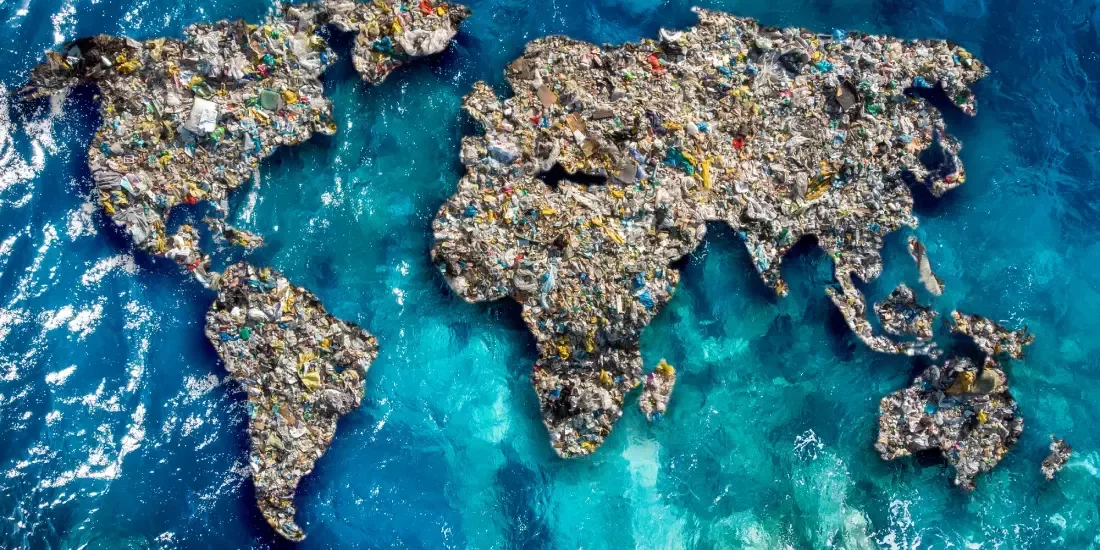Plastic-Eating Bacteria Could Solve Recycling Issue

Plastic pollution is one of the biggest problems facing the modern age. With microplastics having been found in every continent on Earth and tonnes of plastic waste in the sea, it’s imperative that a solution is found to remove it. Fortunately, scientists have come across bacteria that consumes it.
The Findings
Scientists at the University of Stirling’s Faculty of Natural Sciences have been studying bacteria that was found on plastic debris. The initial findings are promising, with signs pointing to faster degradation of plastic waste. Further study is necessary to determine the effectiveness of the bacteria across larger areas.
The research looked at marine plastic pollution and the microorganisms living on them. Scientists were able to identify rare and understudied bacteria that have the potential to assist in the degradation of plastic waste. Considering plastics can take hundreds of years to degrade, this is a groundbreaking discovery.
The Research
The University of Mons in Belgium also had experts take part in the study. Proteins were identified in plastic samples taken from Gullane beach in East Lothian. Using state-of-the-art processes, researchers were able to identify active microorganisms.
This was achieved through comparative metaproteomics and multi-omics, helping to identify which microorganisms were present and which were actively doing anything. Some of these organisms are already known to degrade hydrocarbons and other pollutants, so the findings solidify some previous understanding.
Doctor Sabine Matallana-Surget led the team, helping to analyse the proteins expressed by the microorganisms identified as being active.
“Microorganisms rapidly colonise the surface of plastic pollution when it enters the environment, and their complex ecological interactions can shape the fate of plastic in marine systems.”
Dr Matallana-Surget – Associate Professor of Biological and Environmental Sciences at the University of Stirling
Origins of Plastic-Eating Bacteria
Plastic-eating bacteria was first found in 2001, when Japanese scientists discovered it in a rubbish dump. At the time, Kohei Oda believed microbes could solve any potential problem that science faces. Even though the microorganisms were able to break down plastic to basic nutrients, their paper was never published as it wasn’t considered of great interest at the time.
Fast forward to 2016 and the results were finally published. The bacterium was labelled Ideonella sakaiensis and was discovered to break down polyethylene terephthalate (PET), which is the most common type of plastic used. Though the findings were incredible, it’s believed that there will eventually be other microorganisms able to break down other plastics.
Why Plastic Is an Issue
Plastic is very hard to recycle. In fact, only 9% of all global plastic is recycled. It’s otherwise incinerated or ends up in landfill or the environment. When plastic is recycled, it loses some of its quality, unlike glass or metal, which can be recycled an infinite number of times without degradation.
The other issue with plastics is how easy it is for them to shed. Crushed products can litter micro and nanoplastics, which enter the environment and wildlife. These super small particles have been found within the human body as well, able to be transferred to babies through breastmilk.
Simply incinerating plastic is not a viable solution. This process removes the carbon from the product, but affects air quality and contributes towards the climate crisis. Dangerous chemicals are released into the atmosphere, which negatively impacts us all.
In the future, it’s possible that plastic could become a fuel.
What’s the Solution?
It can seem like an impossible challenge to limit the amount of plastic we use. Unfortunately, it’s so easy and cheap to produce that using an alternative can often become more polluting through production processes alone. While burning plastic encourages further production, it seems obvious that not producing it in the first place is the way forward.
Reducing the amount of single-use plastic you use in your everyday life is just one way you can help limit the amount of plastic that’s produced year on year. The other solution may seem counterproductive, but it’s to simply put all plastic litter in landfill. When a viable recycling solution is then found, it can all be collected and processed much more easily.
Unfortunately, one of the biggest problems that the UK faces is that there is no uniformity in recycling from council to council. Some are better than others, but a lot of what you believe is going to be recycled isn’t. The bottom line is, there is no easy solution.
